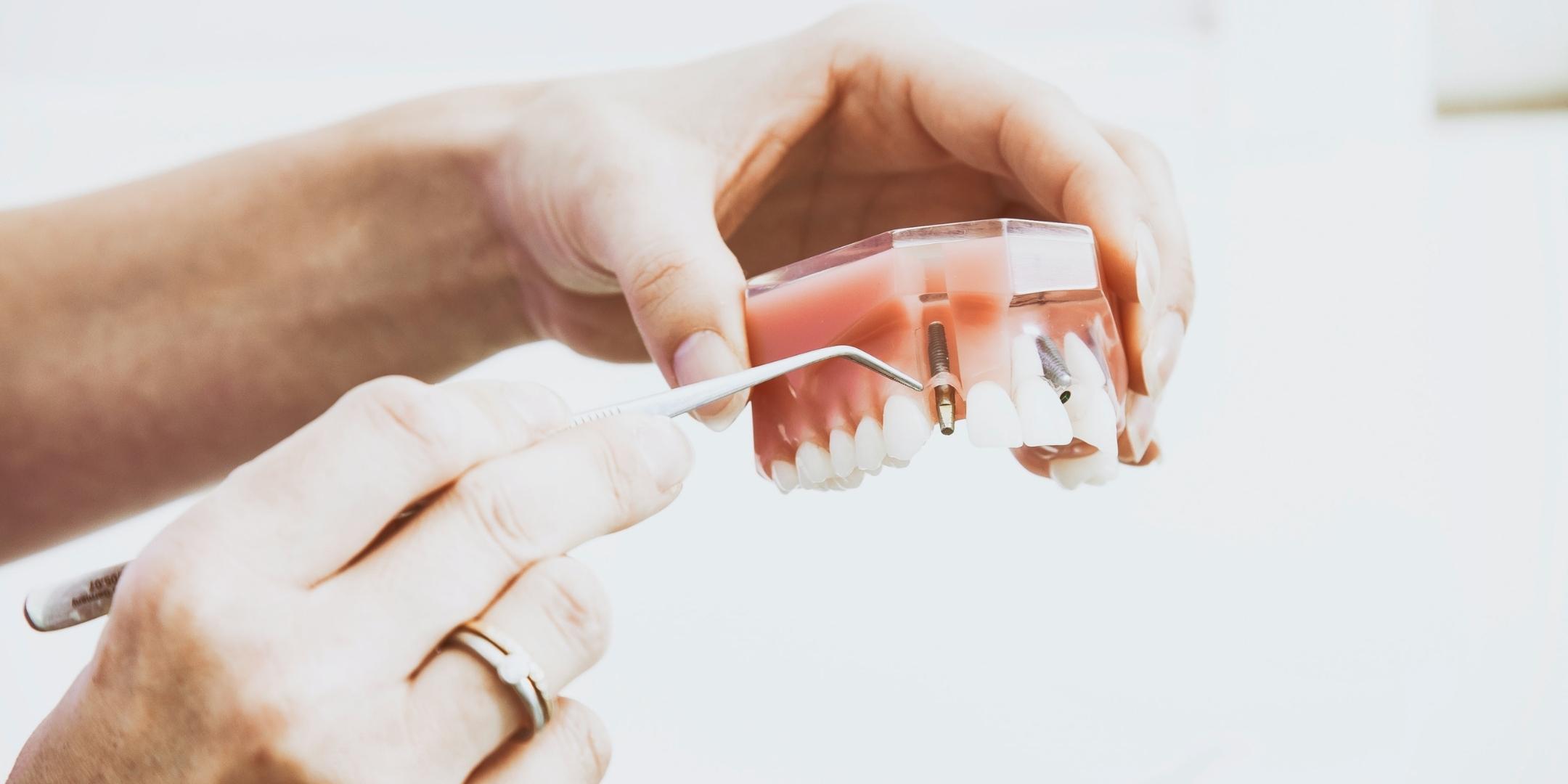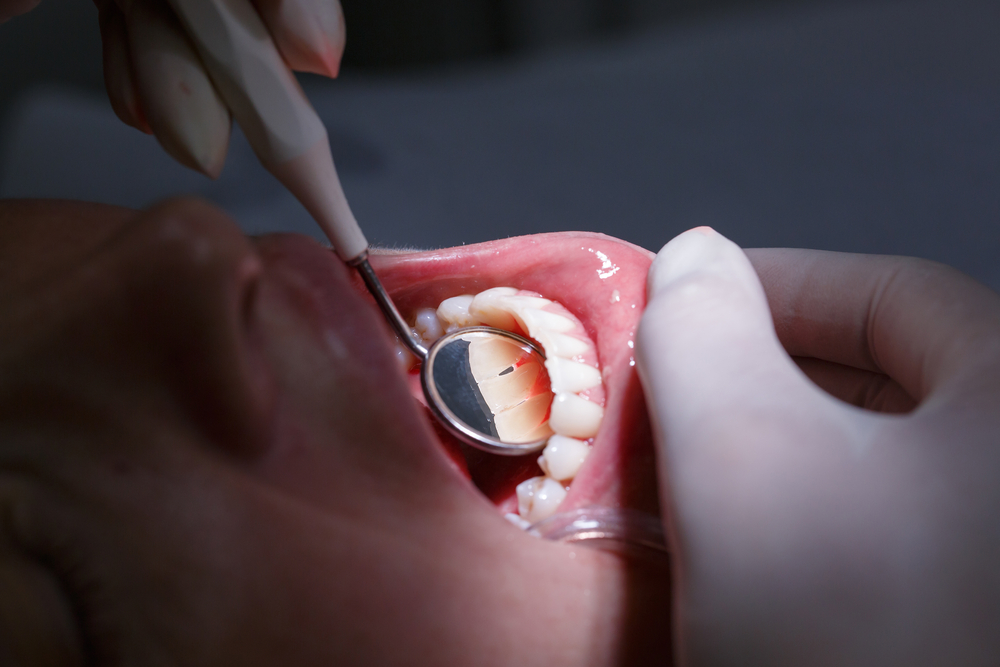A dental implant is a long-term remedy for replacing missing teeth. The dentist places them directly into the jawbone, where they furnish an artificial replacement for the root of the missing teeth. They can support crowns or dentures similarly to those that support natural teeth. Having missing teeth can knock down confidence, affecting how people eat and speak. A dental implant offers a long-lasting and discreet treatment alternative for replacing teeth.
A Dental implant is a titanium screw positioned directly into the jawbone, replacing the missing tooth root. After it has been fitted, the bone encircling the implant will gradually fuse, carrying the implant rigidly in place. A false tooth (a denture or crown)is then conformed to the top of the implant (the abutment), giving a usual look to your smile. If the patient needs more than one tooth replaced, it is possible to have a single implant or multiple ones. It is feasible to have many implants fitted in the same method.
What Are The Major Procedures Of Dental Implant Removal?
A dental implant is a medical process that will take several months. It is a multi-step process because it entails invasive surgery—the first step involves taking X-rays and making an impression on the patient’s mouth. The surgeon will advise the patient to remove damaged or decayed teeth before the implant. Implants consist of abutment, screw-like post, and artificial tooth.
Like implant surgery, removing the dental implant is an involved procedure. If a dental implant needs to be removed, there are two situations where the removal procedure is necessary; a Non-osseointegrated implant and an Osseointegrated implant.
The patient would possibly go under anesthesia, and the specialist would use their pieces of equipment to remove the crown, take out the abutment, and finally withdraw the implant. Moreover, the patient may experience pain after removing the implant, but it should not be too severe or long-lasting. The level and period of the pain a person can anticipate is similar to when it got the implant placed — discomfort that concedes to medication and endures a few days to a week.
A dental specialist must remove a failed dental implant. The possible reasons for the failure are many, but there are two main categories: early and late failures.
What Is An Early Implant Failure?
An early failure happens soon after (within the first few months) the implant placement. Whether the failure is from infection, an unsuccessful osseointegration period, or too much movement during the healing process, a specialist can remove the implant because it has not fused to the jawbone.
What Is A Late Implant Failure?
A late implant failure can occur at any time, say, one year after placement. It can fail due to infection (such as peri-implantitis), excessive force, or loosened implants and is easy to remove.
Aftercare Of Dental Implant Removals
There are many benefits of dental implants only if the person takes proper care after the surgery.
- Medications
The patient has to take the proper medicines prescribed by the doctor at a specific time; otherwise, the area will begin to hurt.
- Discomfort
Suppose the patient feels any discomfort after the dental implant. In that case, it is advised to use a recyclable ice bag or a frozen vegetable bag enclosed in a soft towel pertaining to the area of surgery to help reduce the swelling of the face. Alternating twenty minutes and twenty minutes off will usually be ample during the first forty-eight hours after surgery.
Keeping the head of the patient elevated above the heart will also help relieve the pain. Mainly swelling happens in the morning and will last up to three days after the surgery. It is better to avoid sleeping / laying on the side where the surgical procedure was performed. If the patient feels any soreness after doing all the measures, it should be reported to the doctor immediately.
- Bleeding
Minor bleeding may occur during the first 48 hours following surgery. Avoid scorching foods for the rest of the day, and do not rinse out your mouth, as these will often extend the bleeding. If bleeding is prolonged, apply light pressure to the area with a moistened gauze or tea bag. Avoid any complex physical activity for the next 2-3 days to prevent or minimize severe bleeding.
It is advised to follow a soft food diet to take care of the surgical area, and the food should be chewed opposite to the surgical area.
They were instructed to avoid alcohol (even wine and beer) and smoking during 7-14 days following surgery.
- Homecare
Maintain standard oral cleanliness in the mouth areas not affected by the incision. You need to brush lightly on the surface of the teeth without affecting the surgical area and avoid vigorous rinsing.
Complications of Dental Implant Removal
There are possible risks of dental implants ranging in their stringency and depending on several aspects.
Failure of osseointegration: Osseointegration is a period when the bone grows around the implant. If osseointegration fails, the implant will not be secure enough to hold the crown in place, which is called dental implant failure. In case of dental implant failure, the implant may fall off, or the person may need to have it removed. If the patient’s dental implant fails, the patient and the dentist can decide whether to replace the implant or try another alternative.
Improper implant placement: It is an error in placing the implant. If there is a problem with the posture or angle of the implant, it may lead to difficulties. The implant may not be adequately attached to the bone and may be too close to the adjacent teeth, leading to discomfort or pain. If this transpires, you will need to remove or replace the implant. You may want to seek a second opinion from another dentist before getting a new implant. However, some people may experience infection, injury, Nerve Damage, sinus issues, slower healing, and minor bleeding. It is usual to have some mild oozing or spotting for up to 24 hrs to 48 hrs.
Possible Issues
A dental implant is an effective option for tooth replacement. However, patients occasionally report sensitivity problems to the material. Some people may even have a previously unknown allergy to titanium. In this case, the patient may request that the implant be removed. If the metal shows up in the gum line, it could be another reason to take it out. The implant may not be adequately attached to the bone in rare cases.
Final Words
People can expect good results when getting one dental implant or multiple implants. However, if you have any severe problems, you may get your dentist to remove the implant and follow another plan. If you have a bad reaction to the implants, talk to the dentist about the concerns. The dentist will take an X-ray and examine the mouth to determine if it makes sense to remove the titanium implants.









